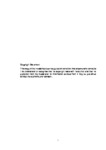LPS from subgingival plaque and the periodontal pathogen Porphyromonas gingivalis, its effect on M1 and M2 macrophage responses and potential as a biomarker
| dc.contributor.supervisor | Foey, Andrew | |
| dc.contributor.author | Strachan, Alexander | |
| dc.contributor.other | Faculty of Health | en_US |
| dc.date.accessioned | 2020-09-25T11:41:43Z | |
| dc.date.issued | 2020 | |
| dc.identifier | 770177 | en_US |
| dc.identifier.uri | http://hdl.handle.net/10026.1/16427 | |
| dc.description.abstract |
Chronic periodontitis is an inflammatory disease which, in response to a dysbiotic biofilm results in tissue destruction and ultimately tooth loss. The mechanisms which initiate the disease are poorly understood, as are the effectors which cause periods of exacerbation and remission experienced by sufferers of the disease. Lipopolysaccharide (LPS) is an archetypal microbial molecular pattern that instigates an immune response from macrophages (MΦ), key orchestrators of host immune response. Repetitive exposure Is also demonstrated to induce a quiescent state known as endotoxin tolerance, thought to be a protective mechanism but which may also confer protective benefits to potential pathogens. Several bacteria, including keystone periopathogen Porphyromonas gingivalis (PG) is able to modify the bio-reactive lipid-A portion of LPS which in turn modifies immune response. The aims of this study were to characterise lipid-A profiles from subgingival plaque and PG LPS and determine their effects on MΦ biology. Lipid-A isolated from patient samples revealed distinct profiles which demonstrated a correlation with inflammatory potential when used to stimulate polarised MΦs. The rFC assay demonstrated sufficient sensitivity to detect these lipid-A profiles and represents a potential diagnostic test. Patient derived and PG LPS induced diverse and opposing reactions in MΦ subsets, with M2 MΦs producing higher levels of TNF-α and Th17 associated IL-23 compared to M1 MΦs. Proteomic and subsequent gene ontology analysis indicated opposing mechanisms of activation in MΦ subsets. The unfolded protein response was identified to be induced in M1 MΦs challenged with PG LPS combined with an increased susceptibility towards internalisation of bacteria. M2 MΦs however identified a potential bacterial evasion mechanism through the manipulation of antigen processing and presentation. Proteomic analysis following secondary stimulation (endotoxin tolerisation) suggests that mechanisms which are associated with tolerisation of M1 MΦs and both stimulation and tolerisation of M2 MΦs is due to reprogramming events conferred by a combination of TNF-α, type-I interferons and epigenetic regulation. | en_US |
| dc.language.iso | en | |
| dc.publisher | University of Plymouth | |
| dc.subject | Endotoxin tolerance | |
| dc.subject | Lipopolysaccharide | |
| dc.subject | LPS | |
| dc.subject | Periodontitis | |
| dc.subject | Porphyromonas gingivalis | |
| dc.subject | Macrophage | en_US |
| dc.subject.classification | PhD | en_US |
| dc.title | LPS from subgingival plaque and the periodontal pathogen Porphyromonas gingivalis, its effect on M1 and M2 macrophage responses and potential as a biomarker | en_US |
| dc.type | Thesis | |
| plymouth.version | publishable | en_US |
| dc.identifier.doi | http://dx.doi.org/10.24382/502 | |
| dc.rights.embargodate | 2021-09-25T11:41:43Z | |
| dc.rights.embargoperiod | 12 months | en_US |
| dc.type.qualification | Doctorate | en_US |
| rioxxterms.version | NA | |
| plymouth.orcid.id | 0000-0002-1387-3658 | en_US |
Files in this item
This item appears in the following Collection(s)
-
01 Research Theses Main Collection
Research Theses Main


